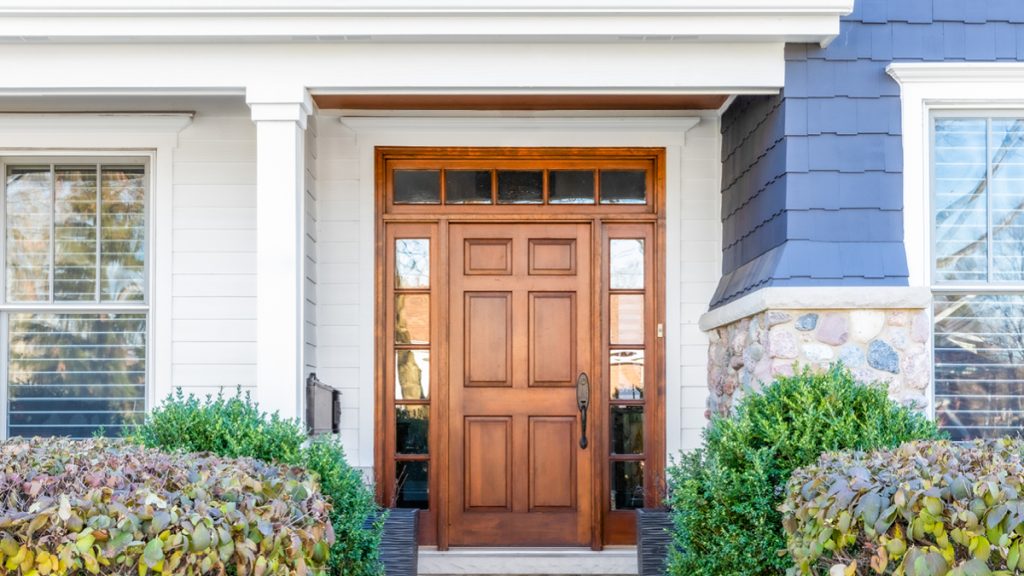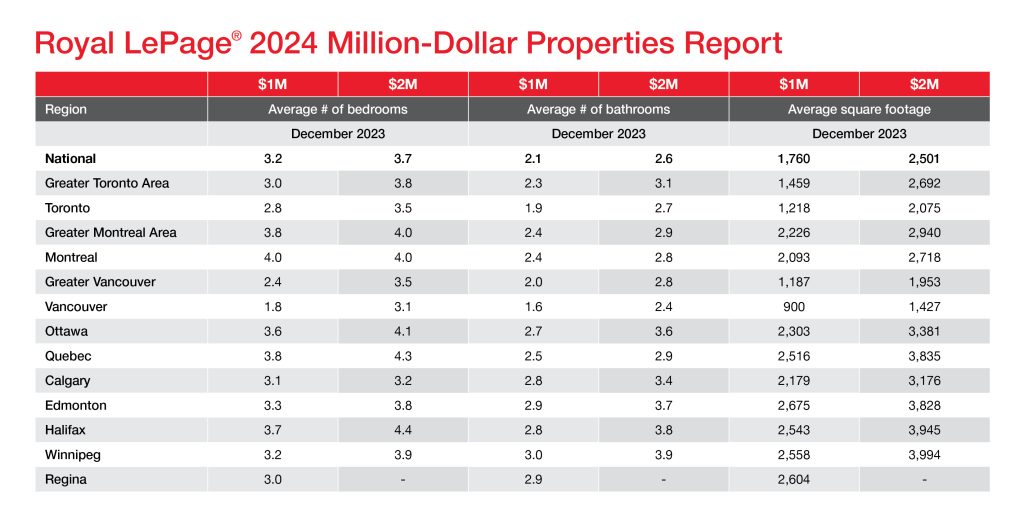
When comparing the real estate markets of various cities, regions and provinces across Canada, a home with a price tag of $1 million can differ greatly. As the nation’s supply deficit persists and buyers struggle with affordability, there remains a vast variation of the definition of a $1-million home across major markets.
In examining what a budget of approximately $1 million – give or take $50,000 – can buy in Canada’s major housing markets, Royal LePage® determined in a new report that the average home in Canada valued between $950,000 and $1,050,000 in December of 2023 had 3.2 bedrooms, 2.1 bathrooms and 1,760 square feet of living space, inclusive of all property types.
Nationally, what $1 million can buy in Canada’s real estate market remains largely unchanged year over year, as a result of a major slowdown in activity and only modest property price growth. By comparison, in December of 2022, a home worth approximately $1 million had on average 3.2 bedrooms, 2.6 bathrooms, and 1,763 square feet of space.
“Depending on the market that you are shopping in, a $1-million home can mean something very different. In Calgary, a budget of $1 million is considered the move-up price point for existing homeowners. In Vancouver, the same amount is often the starting point for entry-level buyers,” said Karen Yolevski, COO, Royal LePage Real Estate Services Ltd. “Years ago, a $1-million budget could buy a generous amount of square footage and access to sought-after neighbourhoods in almost any market. Over time, however, we have watched the purchasing power of $1 million vary more widely between cities. These days, this budget can buy a luxurious detached home in one location, or a two-bedroom condominium in another.”
There remains a stark discrepancy between how far a budget of $1 million will stretch in various regions across the country. Buyers located in some of Canada’s large urban centres often find themselves making more concessions on the type of home they can afford, even with a seven-figure budget, compared to those shopping in smaller, more affordable locations.
According to a recent Royal LePage survey conducted by Leger,1 two thirds of Canadians (64%) believe that $1 million in today’s real estate market is a reasonable budget to afford a home that meets their household’s needs. This includes 22% who say $1 million is ‘adequate’ and another 41% who say it is ‘more than enough’ to afford a home that meets their household’s needs in their current city or region. Meanwhile, 22% say it is ‘not enough’.
“Many buyers are expected to come off the sidelines this year as interest rates begin to come down. This increased activity will undoubtedly put upward pressure on property prices, perpetuating affordability challenges even as monthly carrying costs are reduced,” added Yolevski. “Without a significant increase in supply, especially in cities like Toronto and Vancouver, the standard for a $1-million property will continue to evolve away from large homes.”
Here are a few highlights from the Royal LePage 2024 Million-Dollar Properties Report:
- Edmonton boasts highest average square footage of all regions in the report (2,675 sq. ft.), while Vancouver records lowest (900 sq. ft.) in the $1-million category
- Cities and greater regions of Toronto and Vancouver rank below national average in square footage for $1-million properties, while the Greater Montreal Area boasts an average home size of 466 square feet larger than the national average
- Winnipeg and Halifax record largest average home size in $2-million category at almost 4,000 square feet
Unsurprisingly, for buyers shopping in the $2-million range, a larger budget buys significantly more space. The average home in Canada valued between $1,950,000 and $2,050,000 in December of 2023 boasted 3.7 bedrooms, 2.6 bathrooms and 2,501 square feet of living space, inclusive of all property types.
1Royal LePage commissioned Leger to conduct an online survey among 1579 Canadians, 18 years of age or older, via Leger’s online panel, LEO. The data was collected from January 26 to 28, 2024. No margin of error can be associated with a non-probability sample (i.e. a web panel in this case). For comparative purposes, though, a probability sample of 1579 respondents would have a margin of error of ±2.5%, 19 times out of 20.








